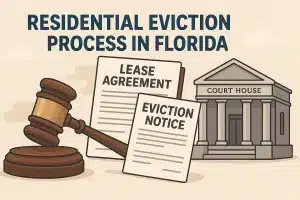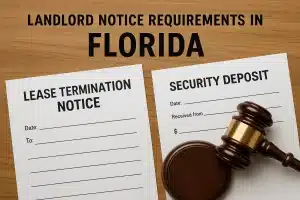
Law Blog
Prescriptive Easements: What You Need to Know to Protect Your Property Rights

Understanding Prescriptive Easements: Protect Your Property Rights
April 28, 2023 | S. Brian Bull
Imagine finding out that some stranger has a legal right to use your property just because they used your property without your permission for a specified period of time. This could happen as a result of the establishment of a prescriptive easement. Many property owners understand the concept of easements, but may not be aware that a stranger can obtain the legal right to use property through a prescriptive easement.
An easement is the right of use over the property of another. An easement can be created in several different ways. An easement can be given by express grant. An easement can be created by implication. An easement can be created by prescription.
A prescriptive easement is similar to the concept of adverse possession. Adverse possession allows one to acquire ownership rights of a property. A prescriptive easement gives the legal right of use of the property to someone other than the rightful property owner. A prescriptive easement is an unrecorded interest in land. Generally a prescriptive easement will not show up in the public records or chain of title for a property unless there is a lawsuit filed to enforce or establish a prescriptive easement.
In simple terms a prescriptive easement is created when someone uses a portion of your land without your permission for a certain period of time. The actual requirements to establish a prescriptive easement are quite complicated. Each state has different requirements for the establishment of a prescriptive easement. In Florida a prescriptive easement requires:
- (1) actual, continuous, and uninterrupted use by the claimant or any predecessor in title for the prescribed period of twenty years;
- (2) that during the whole prescribed period the use has been either with the actual knowledge of the owner or so open, notorious and visible that knowledge of the use is imputed to the owner;
- (3) that the use related to a certain limited and defined area of land or, if for a right-of-way, the use was of a definite route with a reasonably certain line, width, and termini; and
- (4) that during the whole prescribed period the use has been adverse to the lawful owner; that is,
- (a) the use has been made without the permission of the owner and under some claim of right other than permission from the owner
- (b) the use has been either exclusive of the owner or inconsistent with the rights of the owner of the land to its use and enjoyment, and
- (c) the use has been such that, during the whole prescribed period, the owner had a cause of action against the user for the use being made.
A prescriptive easement cannot be acquired to pass over a tract of land generally. There must be an actual route, width, and termini that was used. The use must be open and notorious. Basically, the use must be visible enough that its use would give the owner actual or constructive notice of the use. If the use is clandestine then it would likely not be sufficient to establish a prescriptive easement. A person or the predecessor in title must actually use the route over the property continuously and uninterrupted for at least twenty years. Continuous use does not necessarily mean daily or weekly use. Whether the use is continuous almost always depends on the circumstances and nature of the use. For example, a neighbor using a driveway once a year for twenty years may not be considered continuous use, but a hunter using a route across another person’s property to get to a hunting shack only during hunting season for twenty years may be able to establish that the use was continuous.
One of the most litigated requirements to establish a prescriptive easement is adversity. To establish a prescriptive easement the use must be adverse during whole twenty years of use. The use must be under some claim of right that is inconsistent with the rights of the owner for the entire period of time such that the owner could have sued to prevent further use. Basically the use must have been without express or implied permission from the owner.
The acquisition of a prescriptive easement is not favored under the law. The use of the property is presumed to be with permission of the lawful owner. A person must present clear and convincing evidence of adversity to overcome the presumption. All doubts as to the adverse nature of the use are resolved in favor of the lawful owner of the property. If the use of a roadway on another’s land is not exclusive and is not inconsistent with the other rights of the lawful owner to his use and enjoyment, then such use is presumed to be permissive rather than adverse. Unless the person claiming a prescriptive easement injures the road or interferes with the owner’s use, then there is nothing adverse. Instead, this signifies permission of use in a neighborly way. In sum it is hard but not impossible to establish a prescriptive easement.
Prescriptive easements have significant implications for property owners in Florida. A prescriptive easement allows someone else to use the property that the property owner would likely not want on the property. The existence of a prescriptive easement can affect the value of one’s property. The value of property burdened by a prescriptive easement could be less. A property owner may not be able to develop or use their property as they see fit. A property owner may not be able to build a home because a prescriptive easement goes right through the middle.
There are several strategies that a property owner can take to protect against the creation of a prescriptive easement.
If a property owner is aware that a person is using the property, the property owner can grant that person consent to the use. The consent can be verbal or in writing. Generally, if a property owner is going to grant consent it is best to provide the consent in writing and in the form of a license that can be revoked at any time. Use is not adverse if the use is with the express consent of the owner.
A property owner can build a fence, gate, or other obstructions to prevent any use. However, the property owner would need to make sure that a person does not continue to use the property after a barrier is erected as any continued use would be considered adverse.
A property owner should regularly inspect the property and be on the alert for any signs of use by others. A property owner should be aware of any potential encroachments onto the property. In Florida it takes twenty years for a prescriptive easement to be established. A property owner with a digital camera could regularly take photos and video that can be maintained for years. If periodic inspections documented by photographs and video fail to uncover use of the property, then it would likely be hard for a person to establish that any use was open and notorious.
If a property owner wants to ensure that the property remains theirs to use and develop as they seem fit, then it is important to understand the basic legal requirements for establishing a prescriptive easement so that simple steps can be taken to protect property rights. Regardless of what steps are taken to make sure persons do not use the property, it is important for the property owner to take action as soon as possible to address any improper use if a property owner becomes aware of any use of the property.
If you are seeking to enforce a prescriptive easement over a neighbor’s property or if someone else is seeking to establish a prescriptive easement over your property, then you should contact an attorney.
The information provided in this article does not, and is not intended to, constitute legal advice; instead, all information, content, and materials available in this article are for general informational purposes only. Information in this article may not constitute the most up-to-date legal or other information. Readers should contact an attorney to obtain advice with respect to any particular legal matter. No reader, user, or browser of this article should act or refrain from acting on the basis of information in this article without first seeking legal advice from counsel in the relevant jurisdiction. Only your individual attorney can provide assurances that the information contained herein – and your interpretation of it – is applicable or appropriate to your particular situation.
The views expressed at, or through, this site are those of the author writing in their individual capacity only – not those of Scott-Harris as a whole. All liability with respect to actions taken or not taken based on the contents of this site are hereby expressly disclaimed. The content on this posting is provided “as is;” no representations are made that the content is error-free.
recent post


Navigating Florida’s Residential Eviction Process | Landlord & Tenant Guide

Landlord Notice Requirements for Residential Lease Termination and Security Deposit Claims in Florida
recent post

Residential Eviction for Nonpayment in Florida | Tenant Court Registry Requirements

Navigating Florida’s Residential Eviction Process | Landlord & Tenant Guide










